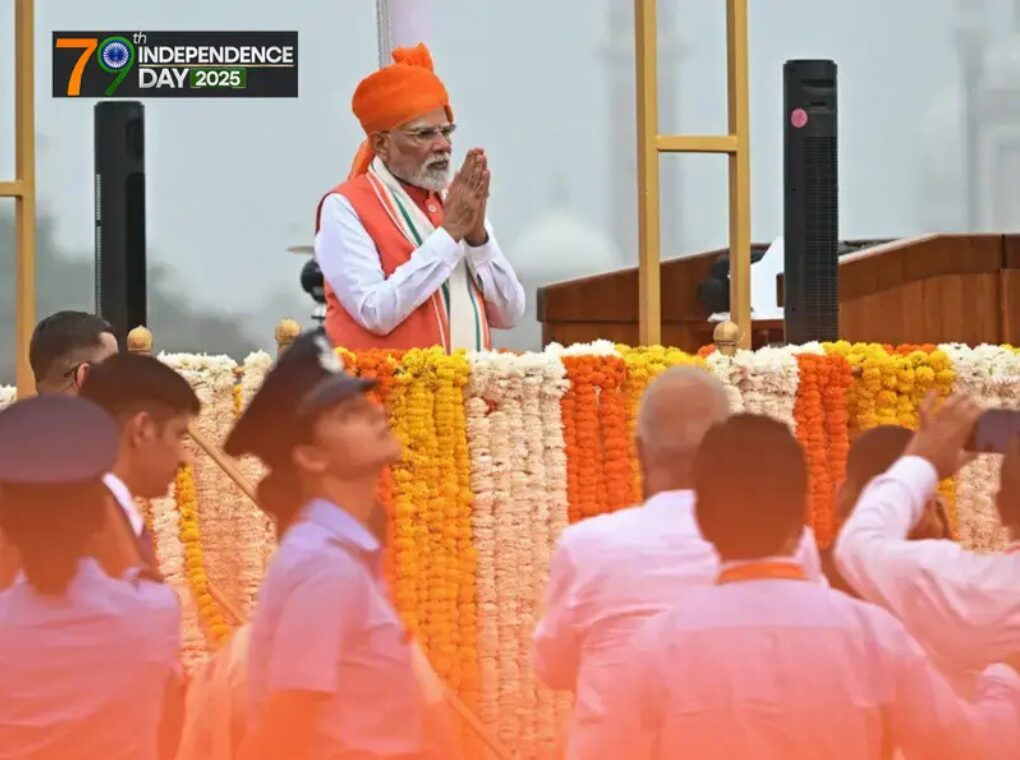Indian Prime Minister Narendra Modi, addressing the nation from the Red Fort on the 79th Independence Day, announced Mission Sudarshan Chakra, a cutting-edge indigenous defence initiative aimed at creating a multi-layered shield to protect India from missile strikes, aerial attacks, and other asymmetric threats.
Inspired by Lord Shri Krishna’s legendary Sudarshan Chakra, the system will also be capable of delivering swift counter-offensives against enemies.
A Decade-long Plan for a National Security Shield
PM Modi declared that by 2035, India would expand, strengthen, and modernize its security shield, ensuring that every critical, civilian, and religious site is protected by emerging technology. The entire project will be researched, developed, and manufactured within India, harnessing the skills of young innovators.
“In the next ten years, I want to create a ‘Suraksha Kavach’ around our nation—powerful enough to counter any attack and strike back decisively,” PM Modi said.
Pakistan’s Missile and Nuclear Expansion
The announcement comes amid growing security challenges from Pakistan, which continues to expand its missile arsenal and modernise its nuclear delivery systems.
Intelligence reports indicate Pakistan has been enhancing the range and accuracy of its ballistic missiles, including the Shaheen-III (capable of hitting all of mainland India) and Ababeel (a Multiple Independently Targetable Reentry Vehicle or MIRV-capable missile).
Islamabad is also developing cruise missiles like Babur and Ra’ad, designed for low-altitude penetration to evade radar detection.
Pakistan maintains one of the fastest-growing nuclear stockpiles in the world, with estimates suggesting over 170 nuclear warheads—a number projected to increase further over the next decade.
Given these developments, India’s need for a robust, rapid-response missile defence system has become urgent.
India’s Indigenous ‘Iron Dome’
Mission Sudarshan Chakra will draw parallels with Israel’s Iron Dome, known for intercepting incoming rockets with over 90% success. However, India’s version will be multi-domain, integrating:
Advanced surveillance to detect threats early across air, sea, and land.
Precision interception of incoming missiles, drones, and artillery shells.
Counter-offensive capabilities to neutralise launch sites before repeated attacks.
The system will provide layered protection to both strategic military installations and densely populated civilian areas, including cities, pilgrimage sites, and industrial hubs.
Recent Conflict Underscores the Need
India’s security environment remains volatile. On May 7, 2025, India launched Operation Sindoor after the Pahalgam terror attack that killed 26 civilians. The Indian military targeted nine terror camps and 13 Pakistani military bases in Pakistan and Pakistan-occupied Kashmir, eliminating over 100 terrorists.
This operation demonstrated India’s precision strike capabilities but also highlighted the risk of missile retaliation from across the border.
Honouring the Armed Forces
PM Modi honoured the bravery of soldiers in Operation Sindoor, with President Droupadi Murmu approving 127 gallantry medals and 40 distinguished service awards, including four Kirti Chakras and 15 Vir Chakras.
Self-Reliance and Strategic Autonomy
Linking defence preparedness to economic independence, PM Modi reiterated his commitment to protecting farmers, fishermen, and livestock rearers, declaring:
“Modi will stand like a wall against any move that harms them.”
He called for India to follow the principle of ‘Daam kam, dum zyaada’ (lower cost, higher value) and focus on strengthening its own capabilities rather than undermining others.
The Road to 2035
Mission Sudarshan Chakra represents a fusion of ancient inspiration and advanced engineering, aimed at ensuring that India is ready to face both traditional military threats and modern missile warfare.
Against the backdrop of Pakistan’s expanding missile capabilities and nuclear arsenal, the mission could become a game-changing pillar of India’s strategic defence architecture.
